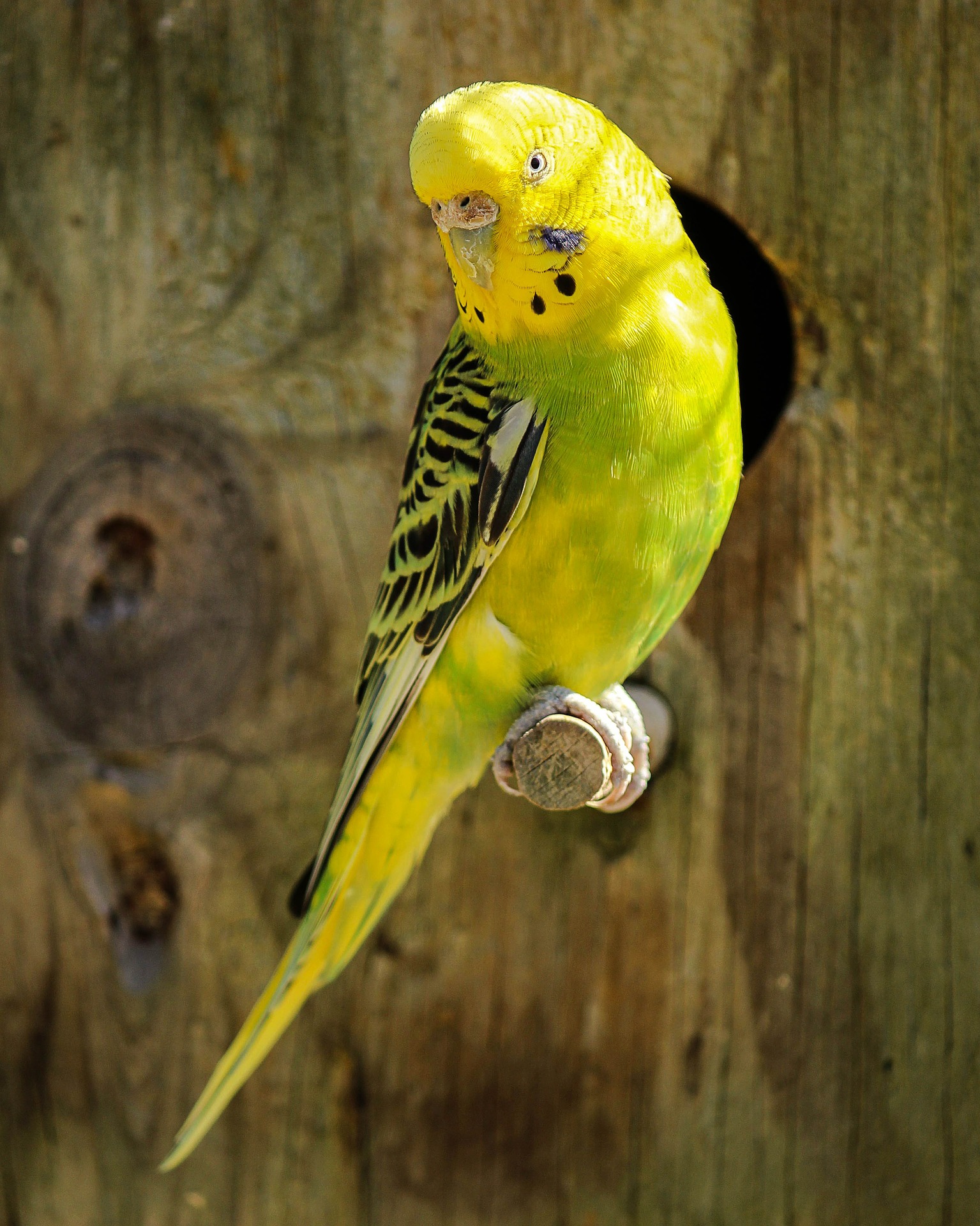How long do budgie parakeets live on average? Before getting a pet, it always concerns to know their lifespan. It’s a common practice and the right thing to do to learn about a pet after you get them or even before. This will help you understand their needs, the diet, how to care for them, the budget, and how to keep them healthy and happy. In this article, we will be looking at the parakeets. If you are looking forward to owning one or you already have one, this is the guide for you. The Parakeets are among the birds to keep as pets.
So how long do parakeets live on average?
Well, Parakeets, in general, can live for up to 15 years if well taken care of. Their lifespan is very much dependent on the birds’ species. For instance, the budgie can live for about 5 to 10 years, the monk parakeet can live for 15 to 20 years, and the plain parakeet quickly gets to 15 years.
Their lifespan is relative to the amount of care they get. Stay tuned to know how to take care of these birds and reach their maximum expectancy.
Caring For Your Parakeet
A healthy pet parakeet requires a big cage, with a few toys and perches, a proper diet, and also, the bird should be let out of the cage to fly around the house once in a while. Let’s narrow down and find out the size of the cage, the diet in details and how to make the bird feel welcome and comfortable with people.
The Cage
Before thinking of getting the bird, be sure to get a cage that is big enough. The size of the cage should be enough to allow the bird to fly around. Keep in mind to have the cage wider rather than taller as the parakeet birds fly horizontally. The size of the cage should be around 18*24*24 inches. This should be the minimum size.
The material used to make the cage should be stainless steel or non-galvanized plastic. The reason behind this is that other metals such as lead, brass, and zinc are toxic to these birds. Keep In mind not to paint the cage as the paint may chip. And avoid materials that can rust.
To ensure that the bird is happy, the cage should provide everything the bird likes to do. The bird loves to climb. This calls for horizontal bars. Minding the safety of the bird, the space between each bar should be less than half an inch, which reduces the risk of the bird’s head getting stuck.
To ensure the cleanliness of the cage, you should line the cage using paper towels that can be removed and replaced with new paper towels. Lining the cage should be done using the paper towels or copy paper rather than newspapers. The lining is not enough. You should clean the bars of the cage as well with soap and water. This will ensure the environment is safe for the parakeet.
The cage should also have a food bowl as well as a water drinker. These two should not be placed at the bottom of the cage as they may be knocked off or contaminated with the bird’s waste. The solution to this is to mount them on the bars of the cage.
As decorations to the cage, get perches that make the cage resemble the wild. You can use branches with large diameters such as the pear, plum, and cherry. These branches are safe for the parakeet, and they also help to trim their nails. The parakeet can peck on the branches. Most cages come with the wooden dowelling perches that are not as good as the trees I just mentioned. They do not have the abrasive action of the pear, plum, and cherry, which means they do not trim their nails. You should replace these whenever possible.
You can also add toys inside the cage to stimulate and keep the bird occupied. These birds enjoy toys such as mirrors, ladders, and bells. These will keep the bird happy and prevent boredom, which is not good as the parakeets tend to scream when they are bored.
The other thing you should do is to find a suitable spot to place the cage. The parakeet is a very social bird. Therefore, you should get a spot where you spend most of the time in the house. Also, the cage will make the bird feel secure.
The Diet
The diet is also as important as the cage. A proper diet also helps to maximize the life expectancy of the parakeet. In the wild, the parakeet feed on seeds, which is not very safe for them as they are sources of bacterial infection. You should avoid the seeds as they will reduce the lifespan of your bird. Try feeding your bird pellets most of the time. Their diet should be 60 to 70% pellets. It may be difficult for them to adapt to the new diet, and they may even refuse to eat. Give the bird time to adjust and get used to the new dirt. This can take up to 2 weeks.
To supplement the pellets, try fruits and vegetables as well as seed mixes. The nuts and veggies should include apples, carrots, peas, cooked yams, kales, beets, mandarin oranges, citrus, and parsley. Keep in mind to always vary their food. You should not give them food the same fresh food in two consecutive days to prevent food overload. You also remember that not all fruits are suitable for the parakeet. Most of them are. Here are the fruits you should avoid-eggplant, avocados, apple pips, rhubarb, potato plant leaves, tomato plant leaves. Other than these, you should also avoid parakeet caffeine, alcohol, and chocolate.
Once in a while, you should offer the bird some treats. You can use millet sprigs or spray, which they like. This is good as you can also train the bird to perch on your hand. Remember not to give a lot as they are fattening. Avoid threats, such as oats and sweets.
Another thing to remember is to ensure that you change the food and water every day. This is a good and effective way to let your bird get used to you. He will appreciate you cleaning the cage and bring food and water.
Socialize with the bird
Parakeets enjoy your company a lot. They are very social birds, and you should be ready to offer your company. Once the parakeet gets used to you, you can play with the bird for long periods. If you fail to provide the attention they need, they will lose interest in you, and if the bird has a companion, they will concentrate on bonding themselves. You should be proud of being part of the flock. There are different ways you can interact with the parakeet such as singing together, bathing the parakeet, talking to them – read How to Teach Parrots to Talk [5 Proven Tips], letting them perch on your finger. The parakeet can learn some words and say them when they are about to do what you taught them. For instance, you can say step up whenever your finger is in front of them and they will learn and say step up when before they step onto your finger.
Remember to let the bird out of the cage every day for some freedom. Let the bird enjoy some free flight. When doing this, ensure the environment is safe. Close the windows, keep the cats away, and remove all sharp objects.
When the parakeet is sleeping, keep the temperatures right. The temperature should be around 27 degrees Celsius. At night, remember to cover the cage with a towel as it makes them feel safe. Just make sure the bird can still breath as you do this.
What To Do If Your Parakeet Gets Sick
The first thing to do is to take the bird to a vet if you notice signs of sickness. The signs and symptoms include:
- Mucus on feathers.
- Loss of weight.
- Discharge from beak and eyes.
- Abnormal breathing and behavior.
- Obesity.
Get the budgie to the vet as fast as possible if you notice any of these signs.
RELATED QUESTIONS
How To Tell Your Parakeet Is An Adult?
Baby parakeets tend to have black eyes that fade to a grey or brown color at around four months. The fading takes another four months, and at this time, the bird is an adult at 8 months.
Do Parakeets Live Longer In Captivity?
Yes, parakeets in captivity will live longer as they are taken care of and provided with all they need. They avoid the risk of predators, lack of food, and exposure to the harsh conditions in the wild. In captivity, they can live for up to 20 years.
The parakeet bird is a fascinating bird and a good companion. They are funny as they learn and talk to you. To enjoy their time, make sure you keep them safe and provide all they need. This is what will determine how long the parakeet will live as a pet.

